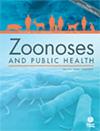ESBL Producing E. coli in Chickens and Poultry Farms Environment in Selangor, Malaysia: A Cross-Sectional Study on Their Occurrence and Associated Risk Factors With Environment and Public Health Importance
Abstract
Introduction
Extended-spectrum β-lactamase-producing Escherichia coli (ESBL-EC) are widespread multidrug-resistant zoonotic bacteria that threaten animal production, food safety and antimicrobial therapy worldwide including Malaysia. Poultry has been reported as one of the pathways for human exposure to ESBL-EC. There has been little research on the occurrence of ESBL-EC within the Malaysian poultry food chain. Hence, the objectives of the study were to determine the occurrence of ESBL-EC in chickens and to identify the potential risk factors associated with their occurrence in poultry farms.
Methods
A cross-sectional study was conducted on 400 samples, consisting of 240 cloacal swabs from chickens and 160 from poultry farms environments in eight districts in Selangor, Malaysia using culture and disk combination methods and multiple polymerase chain reaction assays. In the determination of possible factors associated with the presence of ESBL-EC at poultry farms, a questionnaire was used to obtain the information and data.
Results
The findings demonstrated the wide distribution of ESBL-EC in all the farms with an overall occurrence of 37.2%. Farms in Gombak, Klang and Hulu Selangor had the highest occurrence rates at 62%, 50% and 50%, respectively, followed by farms in Petaling 38%, Sepang at 34%, Kuala Langat at 26% and Kuala Selangor at 24%, and the lowest was in Hulu Langat 14%. Among the study samples, chickens had the highest occurrence rate at 45.4%, followed by chicken house floors at 40% and flies at 30%, while feed and water samples at 17.5% and 12.5%, respectively. The present study indicated the high occurrence and wide dissemination of ESBL-EC in chickens and poultry farms environment. The ESBL-EC occurrence was associated with several factors including imprudent use of antibiotics, poor husbandry, management and biosecurity practices at the farms.
Conclusions
Our study showed the presence and spread of ESBL EC among chickens in the farms and their environment; this may lead to being spread to outside of farm environment by flies, vermins, flying birds, litter and farm wastes and possibly to humans upon contact with the contaminated environment and by poultry meat. Thus, the findings of the study can assist to serve as a piece of useful information to veterinary authority in designing evidence-based mitigation strategies for the control of ESBL-EC in poultry farms.

 求助内容:
求助内容: 应助结果提醒方式:
应助结果提醒方式:


